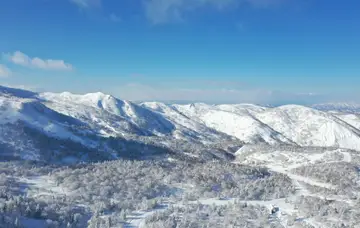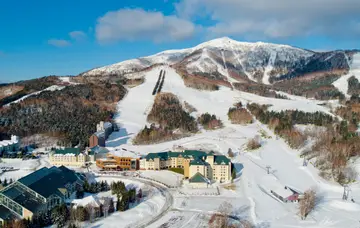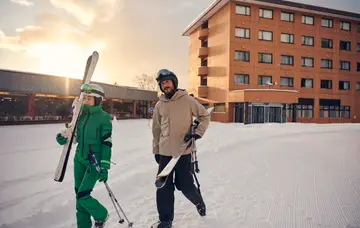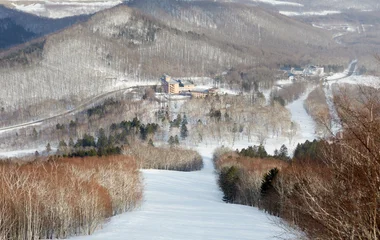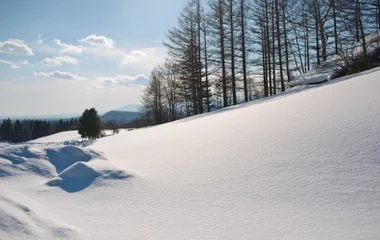How much does it cost to ski in Japan?
The cost of skiing in Japan will depend on many different factors including accommodations, time of travel, and lift passes. The prices will also vary based on locations, exchange rates, and specific resort offerings, i.e. is it all-inclusive or not? It also depends on where you’re travelling from, the flights, the length of your stay, and more.
How to become a ski instructor in Japan?
To work as a ski instructor in Japan, you’ll need to go through four essential steps. First, you’ll have to gain an internationally recognized ski instructor qualification. Then, you’ll need experience working as a ski instructor. Following that, you will need a Japanese working holiday visa. The last step is to choose where you want to work and apply for a ski instructor position.
Are ski lessons available for beginners?
Depending on the ski resort you’re staying in, you might have access to ski lessons for beginners. At Club Med, we provide group ski and snowboard lessons for all levels. The intimate group lessons have a maximum capacity of 12 people and are taught by English-speaking instructors from the best, nationally accredited ski schools.
Is it necessary to purchase travel insurance for skiing in Japan?
While having travel insurance isn’t obligatory, it’s highly recommended. Your policy should cover overseas medical expenses, expenses for ski-related injuries, cancellation fees for flights, accommodations, ski equipment rentals, and lessons.
Is it expensive to ski / snowboard in Japan?
Skiing and snowboarding prices are definitely on the rise in ski resorts across the world, and Japan is no exception. However, the biggest contributing factor to price is where you’re coming from.
Luckily, travellers from Australia and New Zealand will find that Japan is one of the more reasonably priced ski destinations. What’s more, once you get to your chosen ski resort, you’ll find that the lift passes are generally cheaper compared to Europe or the US. Not only that but the prices of accommodation and food are comparatively less compared to the bigger ski resorts in Europe or US.
Can I ski off-piste?
Skiing off-piste depends on the resort, as some will allow it, while others strictly prohibit it. If you’re interested in off-piste skiing, make sure to check with the resort you’re staying in beforehand. However, as this type of skiing is considered dangerous, be sure to only visit areas that have been designated as safe by local authorities.
Will I get altitude sickness?
The likelihood of experiencing altitude sickness while skiing or snowboarding in Japan depends on the altitude of the ski resort you’ve chosen. It also depends on how quickly you ascend to higher elevations.
Keep in mind that most ski resorts in Japan sit at moderate to high altitudes, typically ranging from 500 to 1,500 metres above sea level. Also, altitude sickness is more likely to occur when ascending quickly to high altitudes without proper acclimatization.
Personal factors, such as age, fitness level, and previous experience can also influence susceptibility. If altitude sickness is a worry, there are ways to prevent it and remedy it. To mitigate the risks, make sure to stay hydrated, avoid excessive alcohol consumption, and pace yourself when skiing at higher altitudes.
I am thinking about driving in Japan, what do I need to know?
In Japan, driving is done on the left side of the road. As a tourist, you can drive in Japan, as long as you have a valid driving license from your own country, as well as an International Driving Permit. Both the permit and driving license should be acquired before arriving in Japan.
You should also know that most of the signage is written in both Japanese and English in most areas. What’s more, Japan has a zero percent blood alcohol level standard for driving.
If you want to rent a vehicle on your ski holiday, you’ll have access to 4WD vehicles, along with snow tires. Snow chains are also an inexpensive alternative for driving in the snow.
Which resort is closest to the monkey park?
The Jigokudani Monkey Park is a popular tourist spot and home to Nagano’s spring-loving monkeys. Some smaller resorts are a 25–30 minute drive to and from the park, like the Shiga Kogen. There’s also the popular Nozawa Onsen, located 50–60 minutes from the park.






